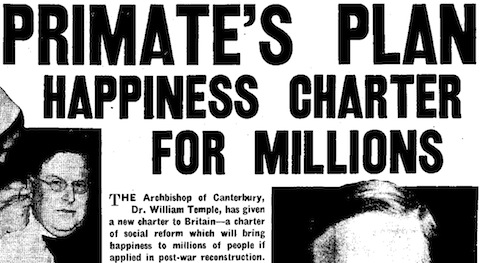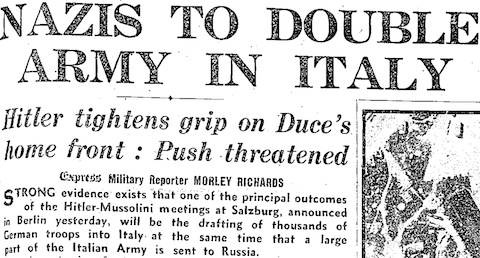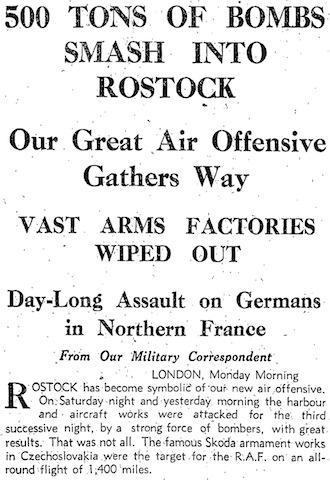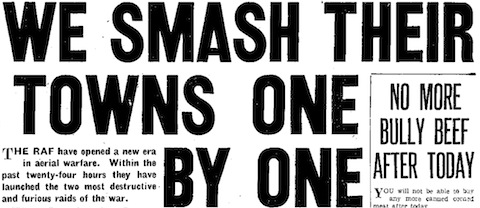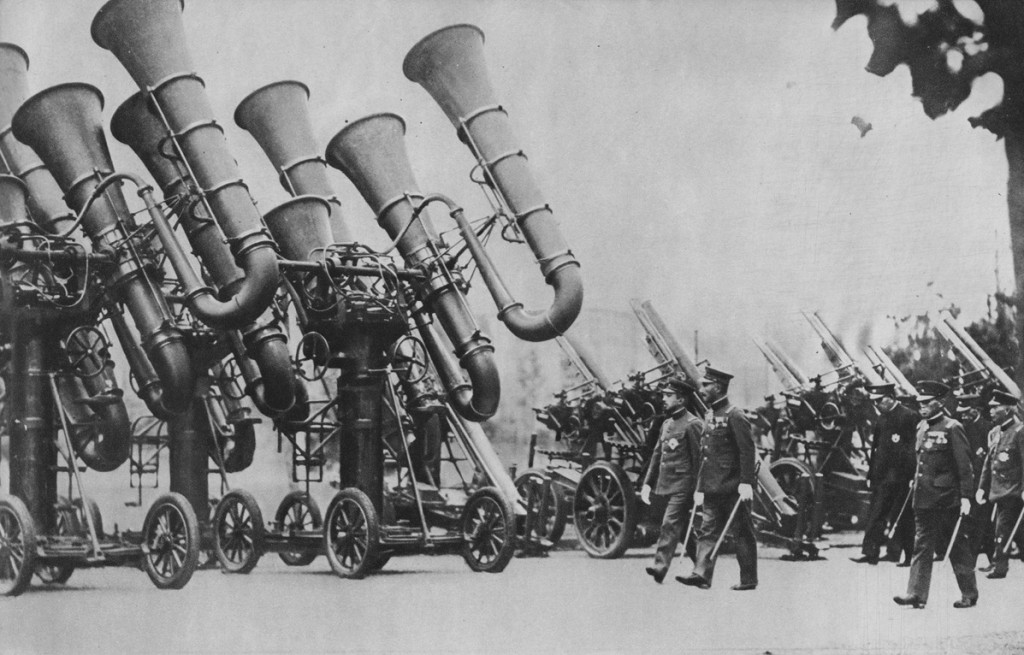Monday, 4 May 1942
The front page of the Daily Mirror today is almost wholly given over to a story which the other papers are far less interested in. The recently-installed Archbishop of Canterbury, Dr William Temple (that’s him on the left, though what is being done to him I have no idea; and that’s his forehead on the […]


